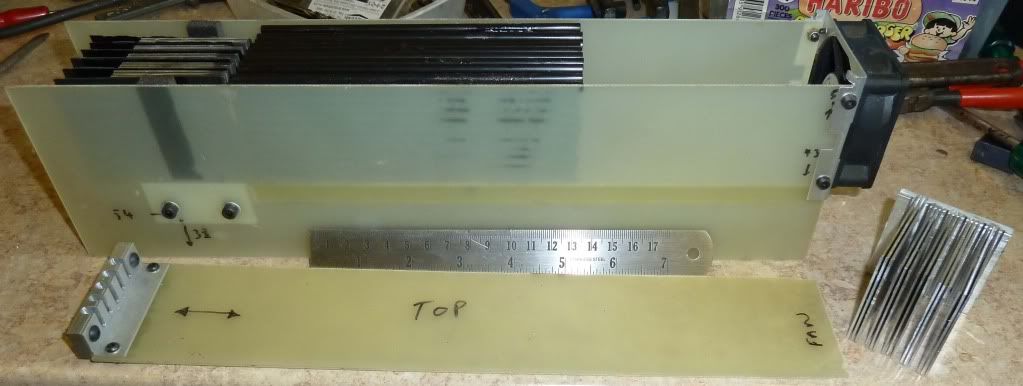As part of a project I need to fit some 1mm thick aluminium fins into and aluminium block, around 10" long. The fins are spaced at 1mm apart. In order for the project to work well the fins need to have a good thermal contact with the block material. The slots are 4mm deep and the fins need good thermal contact with at least 1 side of the slot.
In an ideal world, you could cut the slots to exactly the correct width and the fin would be in intimate contact with the block, but the reality is that its very difficult to achieve even a decent push fit. Slitting saws of the same batch and thickness all produce differing results with regards to width.
I've investigated thermally conducting adhesives, but they are really not that good, especially with thin gaps. I've also looked at aluminium solder paste, but I don't think it would be possible to solder all the fins in one go, and once soldered, it would be impossible to remedy any problems as the other fins would be in the way.
So I'm trying to figure out an acceptable mechanical solutions.
#1 By making the slots slightly oversize, with an angular cut 2mm deep into one side of the slot, and hammering in pieces of steel shim to jam the fin against the opposite slot wall.
#2 I'm also considering deforming the fin by placing small indents at regular intervals along the fin length, thus using the straightening pressure of the slot to force the fin against the opposite wall. I may have to make up a device to set the spacing and depth of indent to get optimum repeatable results.
I have lots of fins to fix like this so I need a good repeatable solution.
Any other ideas or advice most welcome.
Best Regards
picclock
In an ideal world, you could cut the slots to exactly the correct width and the fin would be in intimate contact with the block, but the reality is that its very difficult to achieve even a decent push fit. Slitting saws of the same batch and thickness all produce differing results with regards to width.
I've investigated thermally conducting adhesives, but they are really not that good, especially with thin gaps. I've also looked at aluminium solder paste, but I don't think it would be possible to solder all the fins in one go, and once soldered, it would be impossible to remedy any problems as the other fins would be in the way.
So I'm trying to figure out an acceptable mechanical solutions.
#1 By making the slots slightly oversize, with an angular cut 2mm deep into one side of the slot, and hammering in pieces of steel shim to jam the fin against the opposite slot wall.
#2 I'm also considering deforming the fin by placing small indents at regular intervals along the fin length, thus using the straightening pressure of the slot to force the fin against the opposite wall. I may have to make up a device to set the spacing and depth of indent to get optimum repeatable results.
I have lots of fins to fix like this so I need a good repeatable solution.
Any other ideas or advice most welcome.
Best Regards
picclock








